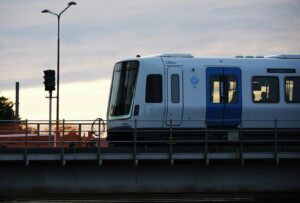In an attempt to boost housing supply Sir Keir Starmer has announced councils will be required to construct on brownfield sites and low-quality parts of the green belt.
This morning, Sir Keir Starmer announced five new rules that will help England out of the ‘housing emergency’ created by the Conservatives. Starmer said the issue is ‘engulfing a generation of hard-working aspirational people’.
Part of the plans include Labour sticking to its brownfield first policy, but Starmer has said the party will also be releasing ‘poor quality and ugly areas’ of the green belt.
Labour said that plans must target at least 50% affordable housing delivery on grey belt land that is released.
Following this, Knight Frank, a real-estate firm, has found 11,000 grey belt sites in England and has estimated that they could be used to deliver around 100,000 new family properties, potentially increasing to over 200,000.
Commenting on the news, Kate Henderson, chief executive of the National Federation of Builders (NFB) said: ‘Building on brownfield land alone will not deliver enough homes to solve this crisis, so it’s right to consider how our approach to the green belt can better serve our country and our communities.’
However, Conservative Party chairman, Richard Holden, said: ‘Only Rishi Sunak and the Conservatives will respect local communities building the right homes in the right places which has delivered one million homes over this Parliament and sticking to the plan to reduce inflation and get mortgage rates down to help first-time buyers.’
In addition to announcing the brownfield and grey bely policies, the other rules outlined by Labour today include:
- Prioritising affordable homes
- Boosting public services and infrastructure
- Protecting genuine green space
Rico Wojulewicz, head of policy and market insight at NFB, said: ‘The devil will always be in the detail, but Labour appears to understand that placemaking requires input and support from all quarters and that the housebuilder’s job is to build the homes, not control what infrastructure is required, how offsite nature links up to a new development and why a site is allocated for new homes.
‘Alongside other announcements and discussions, such as reforming compulsory purchase and having more onsite biodiversity opportunities, it feels as though we have a political party which understands the problems planning uncertainty causes for housebuilders, communities, nature, and society at large.’
Echoing a similar tone, Lawrence Turner, director of Boyer, has claimed that we need a government who are genuinely going to deliver on housing targets.
‘As the UK’s housing crisis continues to worsen, the need for a joined-up approach to deliver more homes is urgently required,’ Lawrence said. ‘Addressing the housing crisis needs to encompass the use of brownfield and greenfield sites, the establishment of new settlements and the carefully considered release of Green Belt land.’
Lawrence added: ‘The latter is something that the current government has avoided for the last 14 years. Kier Starmer is correct when he says: ‘We cannot build the homes Britain needs without also releasing some land currently classed as green belt’.
‘It is important to recognise that green belt land does not solely comprise areas of pristine countryside. In fact, many green belt areas are used for industrial purposes, golf courses, or intense agricultural activities – which Keir Starmer refers to as ‘grey belt.’ This distinction is crucial, as it dispels the misconception that all green belt land is environmentally valuable and must be preserved at all costs.’
With this in mind, Labour have said that they have ruled out building on ‘genuine nature spots’ and will require developers to include improvements to existing green spaces in their plans.
Angela Rayner, deputy leader of the Labour Party, said grey belt land ‘should not be off limits while local people are kept off the housing ladder’, adding that much of the green belt ‘isn’t green, rolling hills, but poor-quality scrubland, mothballed on the outskirts of town’.
Image:


















Leave a Reply